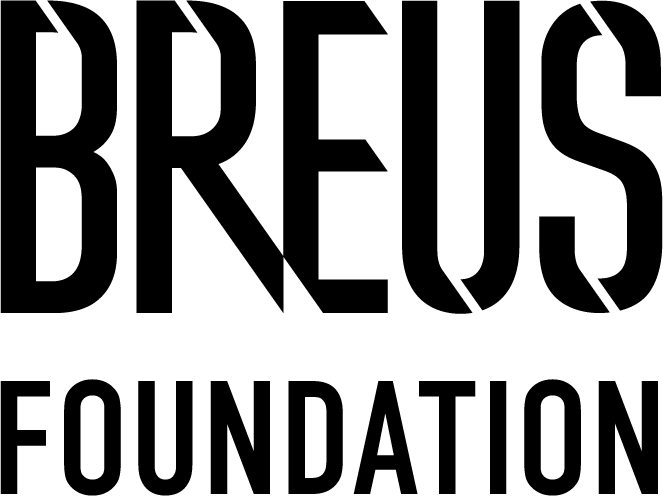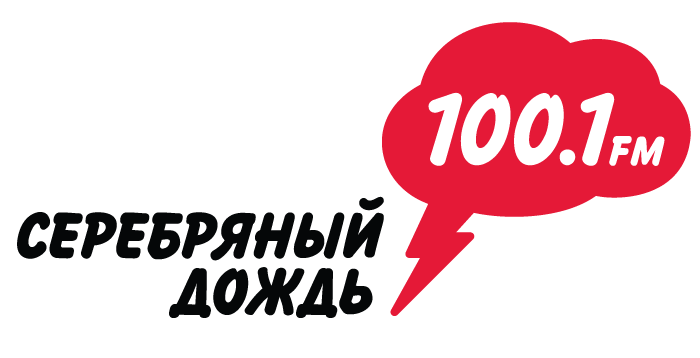Heroic Monument
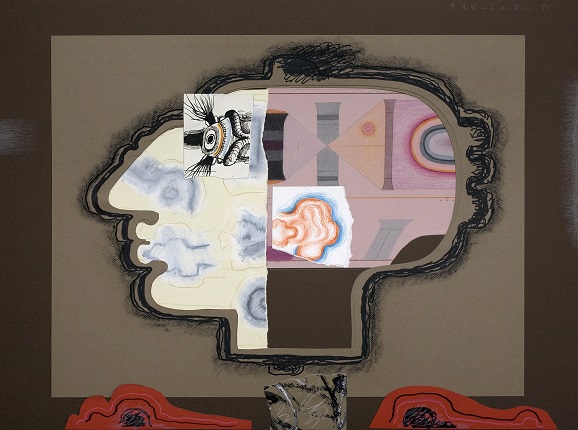
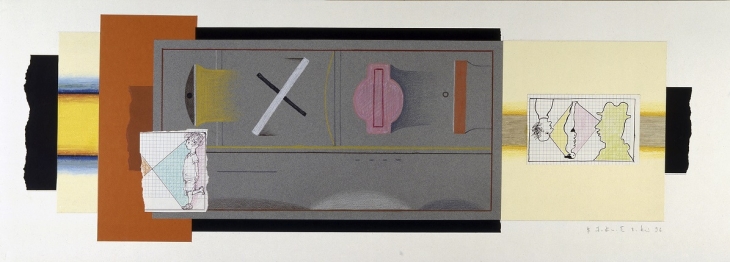
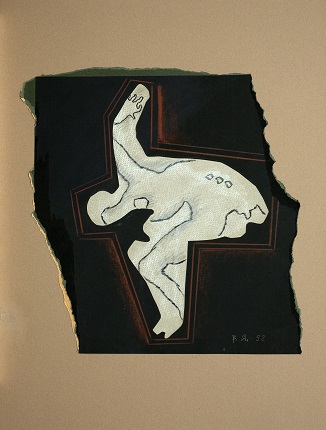
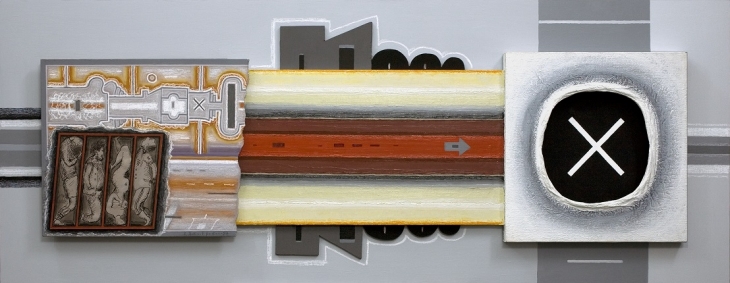
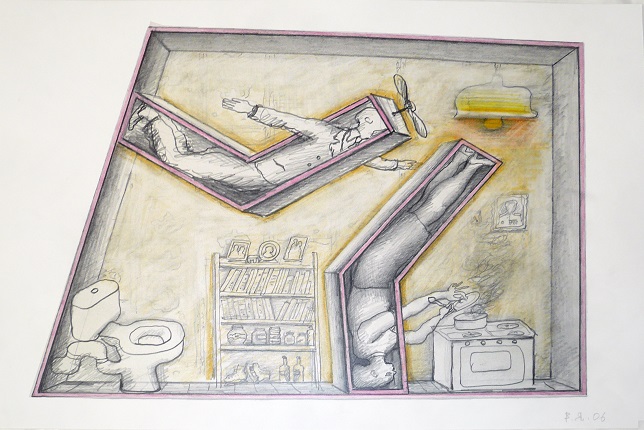
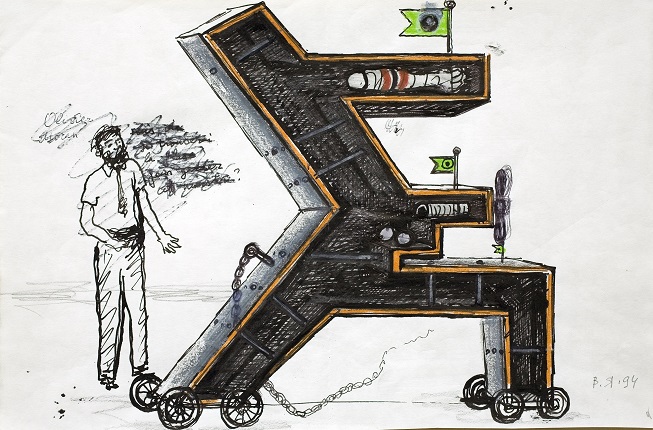
Vladimir Yankilevsky. Self Portrait. 1999. Coloured card, coloured paper, paper, pencil, oil pastel, Indian ink, felt-tip pen, colour pencils, collage. Shalva Breus collection
Vladimir Yankilevsky. Points of View. II. From the cycle ‘City’. 1996. Paper, pastel, pencil, collage. Collection of the artist's family
Vladimir Yankilevsky. In Prison. From the cycle ‘People in Boxes’. 1992. Coloured paper, colour pencil. Collection of the artist's family
Vladimir Yankilevsky. Being and Eternity. 1997. Wood, fibreboard, card, oil, acrylic, Indian ink, assemblage. Shalva Breus collection
Vladimir Yankilevsky. Family. From the cycle ‘City’. 2006. Paper, pencil. Collection of the artist's family
Vladimir Yankilevsky. Heroic Monument. From the cycle ‘People in Boxes’. 1994. Paper, pastel, Indian ink. Private collection
Moscow, 18.09.2019—8.12.2019
exhibition is over
Share with friends
Co-organizer of the exhibition: Breus Foundation
For the press
Vladimir Yankilevsky
Heroic Monument
September 18, 2019 — November 17, 2019
Curators: Olga Sviblova, Anna Zaitseva
Co-organizer of the exhibition: Breus Foundation
The Multimedia Art Museum, Moscow presents the ‘Heroic Monument’ exhibition by Vladimir Yankilevsky, one of the most important artists of Soviet unofficial culture, a classic of contemporary art in Russia and worldwide.
Vladimir Yankilevsky was born on 15 February 1938 in the family of artist Boris Yankilevsky. In 1950 he began studying at the Moscow Middle School for Art (MSKhSh), part of the Surikov Institute. He graduated from the Moscow Institute of Printing Arts in 1962, specialising in book illustration.
In 1962 the now infamous exhibition ‘30 Years of the Moscow Union of Artists’ organised by the Academy of Arts took place at the Manege. It also featured works of Ely Belyutin’s studio members and other young artists who were seeking a new artistic language of self-expression, including those of the 24-year-old Vladimir Yankilevsky. Khrushchev had already been briefed by his ‘advisers’ and his verdict on the exhibition was extremely harsh. The Manege scandal resulted in several generations of artists being deprived for many years of the chance to publicly display their work. This exhibition at the Manege activated the mechanism for the phenomenon later dubbed as ‘unofficial culture’ or ‘the Soviet underground’.
By an irony of fate and thanks to the Khrushchev ‘thaw’ slightly lifting the ‘iron curtain’, like many artists of his generation Vladimir Yankilevsky now had the opportunity to see works by the stars of world art and rethink what the ‘academic’ school of Soviet painting had taught. Pablo Picasso’s exhibition at the Pushkin Museum in 1956, contemporary art exhibitions during the World Festival of Youth and Students in 1957, and acquaintance with late 19th- to early 20th-century French art inspired his own artistic search. In ‘An Attempt at a Creative Autobiography’, Vladimir Yankilevsky later wrote: ‘The academic school is conservative and limited. It considers a certain specific period in art to be the supreme and unshakeable achievement and teaches us to imitate examples of this, ignoring the fact that the new reality also creates a new realism, which engenders the eternal renewal and development of art... In a certain sense this official art was a mirror of official life, its falsity, wishful thinking, stagnation and demagoguery with an aesthetically embellished façade. The disease afflicting society could be diagnosed by looking at official art.’
Unlike many artists of his generation and circle, Yankilevsky was not only looking for a way to convey his attitude to reality through art, he was interested in global metaphysical problems that have traditionally permeated the entire history of art: life and death, the divine and diabolical, moral and immoral, temporary and eternal. Already in his works from 1962 shown at the Manege, the pentaptych ‘Atomic Station’, ‘Triptych No. 2’ and the series ‘Theme and Improvisation’, he creates a universal structure of the image as a model of existence. In ‘Triptych No. 2’ Vladimir Yankilevsky implants postcard reproductions by his favourite artist of the Quattrocento era Piero della Francesca in the pictorial fabric of his work. The Early Renaissance, which intrigued Yankilevsky above all for the multiplicity of perspectives united in one work, undoubtedly influenced the evolution of his artistic universe.
From the very start the young artist strove to find the necessary images and forms that allowed him to express his personal experiences and understanding of the world. This was greatly assisted by his encounter with outstanding pedagogue Eli Belyutin, who in 1958 was teaching at the Moscow Institute of Printed Arts. Eleven classes (one academic year) were enough to lay the foundation for the further independent development of Vladimir Yankilevsky’s artistic universe, his own unique plastic language.
The MAMM project is an original reconstruction of Vladimir Yankilevsky’s exhibition ‘Monument heroïque’, held in Paris in 1994 at the La Base Centre for Contemporary Art founded by Olivier Morane. This exhibition proved very significant for Yankilevsky, allowing the artist to bring together all the main structural elements, cycles, series and vectors of his universe. His artistic cosmos evolved very rapidly and with incredible intensity in the 1960s and 1970s. During this period the cycles ‘Theme and Improvisation’, ‘Space of Experiences’, ‘Anatomy of Feelings’, ‘Self-Portraits’, ‘Mutants’ and ‘People in Boxes’ appeared. The artist developed each of these cycles throughout his life. For Vladimir Yankilevsky the most important form of expression was the collages enabling him to build a whole from individual elements, infinitely varying and complementing the volume of his artistic world. Yankilevsky described his work as follows: ‘... the working process is similar to jazz improvisation or a fugue — initially the theme is set, then you play improvisation. This is a world of intense harmony, but within it there is a place for the absurd and the anecdote, reflecting the irrational side of life and going beyond already established notions of harmony.’
A central place in the ‘Heroic Monument’ project is taken by a sculpture restored according to the artist’s sketches and photographs from the 1994 exhibition at La Base Centre. The sculpture is a development of his monumental cycle ‘People in Boxes’, for which Yankilevsky made drawings as far back as the 1970s. This cycle appeared after the famous installation ‘Door’ (1972), in which he articulated a theme important to him, the clash of spaces between society and existence, when man acts as both the carrier and, at the same time, the victim of idealism and the absurd. For the artist it was vital that the sculpture ‘Heroic Monument’ should be exhibited in the same room as his drawings, gouaches, etchings and collages from all the series, of which the landscapes with horizons are a vital element (the horizon is a system-forming element of the world in Yankilevsky’s cosmos), thus providing a timeless background for the unfolding tragedy, the existence of ‘people in boxes’.
In the structure of the ‘Heroic Monument’ project there is a conflict of opposing principles and forms that ultimately leads to the search for harmony to balance chaos.
The emergence of the ‘Self-Portraits’ series, on which the artist would work for the rest of his life, was no accident. Vladimir Yankilevsky’s self-portraits are the opposite of how world art had previously worked in this genre. They bear no external resemblance to the person portrayed, but metaphorically ‘open the head’ of the artist and explicate moments of his creative activity. It may be said that the ‘Self-Portraits’ cycle develops the series ‘Space of Experiences’. ‘All the works in this cycle have a «horizon», like the energy flow of life dividing a thing into «heaven» and "earth",’ explained Yankilevsky.
Vladimir Yankilevsky’s work is unique and interesting because, on the one hand it is characterised by frantic expression and the maximum emotional stress of each artistic gesture, regardless of the artist’s technique: painting, collage, relief, drawing or sculpture; on the other hand his artistic system is constructed with extreme intellectuality. Conflict, tension and harmony between the emotional and intellectual principles in his art, the attempt to capture in each work the universal structure of the universe and transformation of the created works into their own artistic universe determine the special place that Yankilevsky’s oeuvre occupies in modern Russian and world art. It is no coincidence that in 1977 Vladimir Yankilevsky’s work was the first by a Soviet artist to be included in the Centre Georges Pompidou Collection in the first year after the museum opened.
Vladimir Yankilevsky held more than 40 solo exhibitions during his lifetime. His works feature in the collections of major museums and galleries worldwide, including the Centre Georges Pompidou (Paris), Tate Modern (London), Ludwig Museum (Russian Museum, St. Petersburg), National Gallery (Prague), Museum of Fine Arts (Budapest), State Tretyakov Gallery (Moscow), etc.
Vladimir Yankilevsky passed away shortly before his eightieth birthday. Unfortunately he never saw his retrospective exhibition ‘Mystery of Being’ at the Moscow Museum of Modern Art, on which he worked up to his final days. He has left a vast number of artworks that have yet to be understood and positioned in the context of Russian and world contemporary art. The MAMM exhibition could not have taken place without the participation of the artist’s widow, his muse and companion Rimma Solod. For their assistance and support in implementing the project MAMM would like to thank the Breus Foundation, which has begun fundamental work with the creative heritage of Vladimir Yankilevsky.
Selected solo exhibitions by Vladimir Yankilevsky:
2018 ‘Mystery of Being’. Moscow Museum of Modern Art
2013 ‘Early Works. 1967—1961’. London, Aktis Gallery
2010 ‘Anatomy of Feelings’. London, The Mall Galleries and Aktis Gallery
2009 ‘Métamorphoses’. Paris, Galerie Le Minotaure
2007 ‘A Moment of Eternity’. Moscow, Ekaterina Cultural Foundation and St. Petersburg, Russian Museum
2002 ‘Collagen’. Bochum, Germany, Museum Bochum
2001 ‘La femme à côté de la mer’. Paris, Galerie Dina Vierny
1997 ‘Pastels et Collages’. Paris, Galerie Dina Vierny
1995-97 ‘Retrospective’. Moscow, State Tretyakov Gallery
1994 ‘Monument heroïque’. Paris, Centre d’art contemporain La Base
1992 ‘Autoportraits’. Paris, Galerie Dina Vierny
1992 ‘Take a Train...’ Paris, Gallery Le Monde de l’Art
1991 ‘Retrospective’. Paris Art Centre
1990 ‘Pastels’. Paris, FIAC, Galerie Dina Vierny
1990 ‘People in Boxes’. New York, USA, Berman — E. N. Gallery
1988 ‘Retrospective: Vladimir Jankilevskij. 1958—1988’. Bochum, Germany, Museum Bochum
1988 ‘Retrospective’. New York, San Francisco, USA, Eduard Nakhamkin Fine Arts
1987 ‘Painting and Graphics. Retrospective’. Moscow, Exhibition Hall of Moscow City Committee (Gorkom) of Graphic Artists, Malaya Gruzinskaya
1978 ‘Retrospective’. Moscow, Exhibition Hall of Moscow City Committee (Gorkom) of Graphic Artists, Malaya Gruzinskaya
1967 One-day exhibition. Painting. Moscow, Physics Institute of the USSR Academy of Sciences
1965 One-day exhibition. Painting. Moscow, Biophysics Institute of the USSR Academy of Sciences
1962 One-day exhibition. Ernst Neizvestny and Vladimir Yankilevsky. Moscow State University

